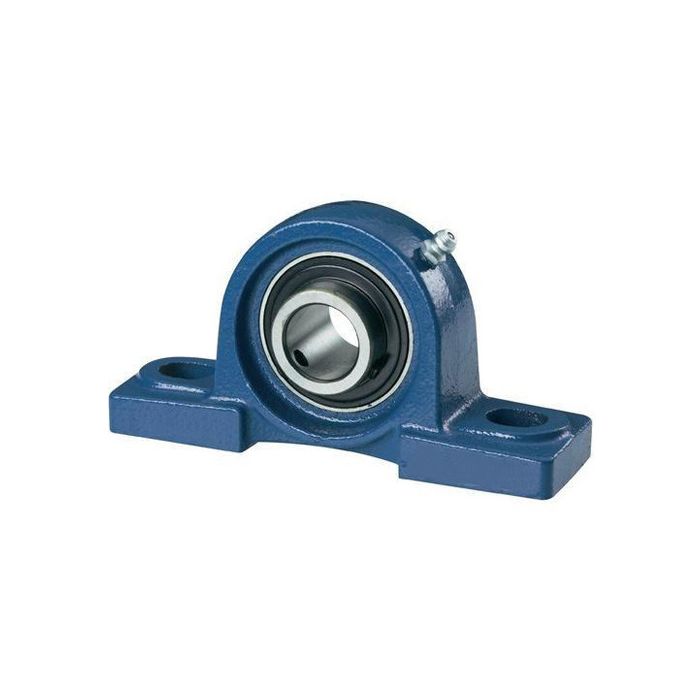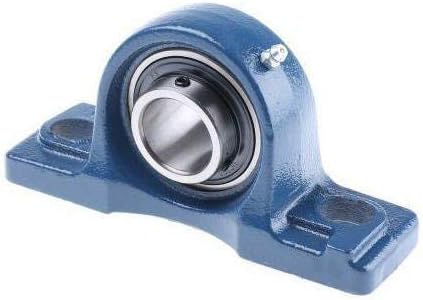
What materials are typically used in the manufacturing of block bearings?
Block bearings, also known as pillow block bearings, are manufactured using a variety of materials to meet different application requirements and operating conditions. Here’s a detailed explanation of the materials that are typically used in the manufacturing of block bearings:
1. Bearing Housing Materials: The housing of a block bearing, also called an outer ring or pillow block, is responsible for providing support and protection to the bearing insert. Common materials used for bearing housings include:
- Cast Iron: Cast iron is a popular material for bearing housings due to its excellent strength, rigidity, and durability. It provides good resistance to shock, vibration, and corrosion. Cast iron housings are commonly used in heavy-duty applications.
- Steel: Steel housings offer high strength and toughness, making them suitable for applications with demanding operating conditions. They provide good resistance to impact, wear, and corrosion.
- Stainless Steel: Stainless steel housings are used in applications where corrosion resistance is critical. They are particularly suitable for environments with high humidity, moisture, or chemical exposure.
- Thermoplastic: Thermoplastic housings, typically made of materials such as polyamide or PBT (polybutylene terephthalate), offer excellent chemical resistance and can be suitable for applications where lightweight, non-metallic housings are required.
2. Bearing Insert Materials: The bearing insert, also known as the inner ring, is the component that directly interacts with the rotating shaft. Common materials used for bearing inserts include:
- Chrome Steel: Chrome steel, also known as bearing steel, is a common material for bearing inserts. It offers good hardness, wear resistance, and load-carrying capacity. Chrome steel inserts are suitable for a wide range of applications.
- Stainless Steel: Stainless steel inserts are used in applications where corrosion resistance is crucial. They provide good resistance to moisture, chemicals, and high-temperature environments.
- Ceramic: Ceramic inserts, typically made of materials like silicon nitride or zirconia, offer exceptional hardness, corrosion resistance, and high-temperature capabilities. Ceramic bearings are used in specialized applications that require extreme performance.
3. Lubrication: While not a material used in the construction of block bearings, lubricants play a critical role in their operation. Lubricants, such as grease or oil, are used to reduce friction, dissipate heat, and protect against wear. The selection of the appropriate lubricant depends on factors like operating speed, temperature, and load conditions.
It’s important to note that the specific materials used in the manufacturing of block bearings can vary depending on the manufacturer, application requirements, and industry standards. When selecting a block bearing, it’s advisable to consult the manufacturer’s specifications and guidelines to ensure the chosen materials are suitable for your specific needs.

What is the temperature tolerance for block bearings?
The temperature tolerance for block bearings can vary depending on factors such as the bearing design, materials used, lubrication, and specific application requirements. Block bearings are designed to operate within a certain temperature range to ensure optimal performance, lubrication effectiveness, and overall bearing life. Here are some key points regarding the temperature tolerance of block bearings:
1. Standard Temperature Range: In general, standard block bearings are designed to operate within a temperature range of -20°C to +120°C (-4°F to +248°F). This temperature range covers a wide range of industrial applications and is suitable for many common operating conditions. It is important to note that this is a general guideline, and specific bearing models or manufacturers may have their own temperature specifications.
2. High-Temperature Bearings: For applications that involve higher temperatures beyond the standard range, special high-temperature block bearings are available. These bearings are designed to withstand elevated temperatures and can operate reliably in conditions up to 200°C (392°F) or higher, depending on the specific design and materials used. High-temperature bearings typically incorporate heat-resistant materials and special lubricants to ensure stability and performance under extreme temperatures.
3. Low-Temperature Bearings: In applications where extremely low temperatures are encountered, such as in refrigeration or cryogenic environments, low-temperature block bearings may be required. These bearings are designed to withstand cold temperatures and maintain their performance even at temperatures as low as -50°C (-58°F) or lower. Special attention is given to the selection of materials and lubricants that can withstand low temperatures without compromising the bearing’s functionality.
4. Temperature Limitations: It’s crucial to consider the temperature limitations specified by the bearing manufacturer. Operating a block bearing outside of its recommended temperature range can lead to premature wear, lubrication breakdown, reduced load capacity, or even catastrophic failure. Factors such as the bearing’s materials, lubrication type, sealing, and cage design can all contribute to the temperature limitations of the bearing.
5. Lubrication Considerations: Proper lubrication is essential for maintaining the performance and temperature tolerance of block bearings. Lubricants have specific temperature ranges within which they can effectively operate. It’s important to select lubricants that are suitable for the anticipated operating temperatures to ensure proper lubrication and prevent issues like excessive friction, overheating, or lubricant degradation.
6. Consult Manufacturer Specifications: To determine the temperature tolerance of a specific block bearing, it is important to consult the manufacturer’s specifications, technical data sheets, or contact the manufacturer directly. They can provide detailed information about the recommended temperature range, limitations, and any special considerations for the specific bearing model.
Overall, the temperature tolerance of block bearings can vary depending on the specific design, materials, and lubrication used. It is crucial to select the appropriate bearing that matches the anticipated operating temperature to ensure reliable performance, minimize wear, and prolong the bearing’s service life.

What is a block bearing?
A block bearing, also known as a pillow block bearing, is a type of bearing that is commonly used in various industrial applications. It is designed to provide support and smooth rotational motion to a shaft or rod while allowing it to move in a linear or oscillating manner. Here’s a detailed explanation of what a block bearing is:
A block bearing consists of two main parts: a housing and a bearing insert. The housing, typically made of cast iron or other sturdy materials, is a solid block-shaped structure with a mounting surface. It is designed to provide stability and support for the bearing insert. The bearing insert, which is usually a ball bearing or a roller bearing, is housed within the housing and is responsible for facilitating smooth rotational motion.
The housing of a block bearing is usually equipped with mounting holes or slots to enable easy installation and attachment to a support structure, such as a frame or housing. The mounting holes allow the block bearing to be securely fastened, keeping it in place during operation. Some block bearings also feature additional features such as grease fittings or seals to facilitate lubrication and prevent contaminants from entering the bearing.
Block bearings are commonly used in applications where there is a need to support and guide a rotating or oscillating shaft. They are often used in machinery and equipment such as conveyors, industrial fans, agricultural machinery, mining equipment, and more. Block bearings provide stability and help absorb radial and axial loads, allowing the shaft to rotate smoothly and efficiently.
One of the advantages of block bearings is their versatility. They are available in various sizes, configurations, and designs to accommodate different shaft diameters and load requirements. The bearing inserts can be interchangeably replaced, allowing for easy maintenance and replacement when needed. Additionally, block bearings can be used in different mounting positions, such as horizontal, vertical, or inclined, depending on the application requirements.
It’s important to select the appropriate block bearing based on the specific application requirements. Factors to consider include the load capacity, speed, operating conditions (such as temperature and humidity), and the compatibility of the bearing materials with the intended environment. Consulting the manufacturer’s specifications and guidelines is crucial to ensure the proper selection and installation of a block bearing.


editor by CX 2024-04-25